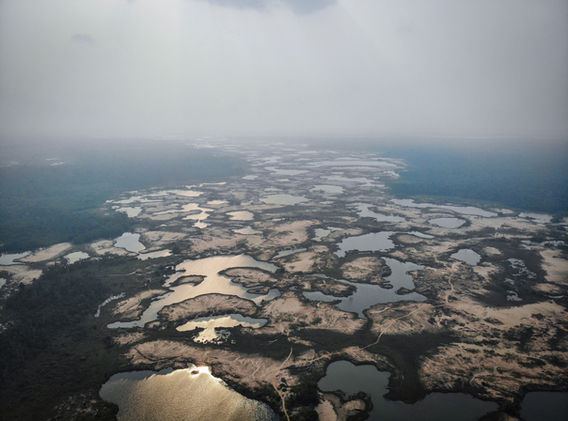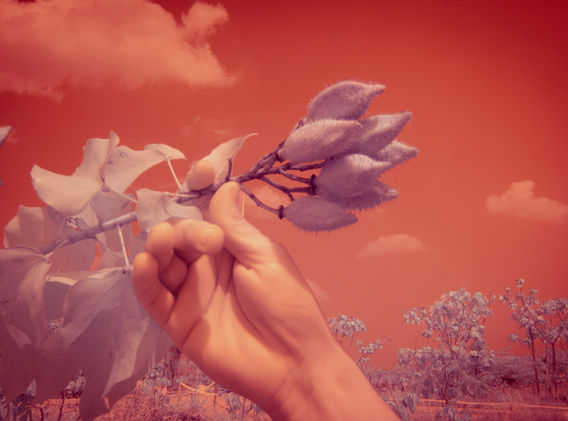Beyond conservation 2022

Often, when we find water and trees in the middle of the desert, we call these sites oases. But what words should be used once we encounter barren and desert-like landscapes in the middle of the rainforest?
What we learned is that with its current methods, gold mining is quickly producing an inverse oasis inside the Madre de Dios region, for lack of a better word, making the rapid desertification of the forest a palpable reality. Witnessing this process first-hand clarified old and introduced new questions.
After trees are cut, soils are dredged and the biota gets carved out of the landscape, all we can see is a terrifying resemblance to one of the Amazon’s distant cousins, which are no other but the African deserts. Without the crucial layer of decomposing leaves and forest debris, the Amazon’s soils are devoid of nutrients to grow life and the piercing heat of the tropics becomes unbearable. Therefore, plants can no longer be seen as passive actors in the cosmic play of life. Plants create and sustain the weather, enable life at all scales, create the forest, and teach communities how to survive, or else resist constant acts of ecocide.

During the residency, I spent time with plants during the day and through the darkness of the night.
Equipped with special UV portable lamps that induce fluorescence and a multispectral camera capable to see beyond the human visual spectrum of light, I spent time crisscrossing layers of invisibility, shadow, and mystic nights in the primary forest cared for at Camino Verde.
There, I was able to produce images that render subtle and sub-visible relations maintained among forest beings while in darkness, from plants positioning their leaves to capture the dim light of the day to spores, fungi, and pollen holding together a network of interactions.
This work took place at Camino Verde, a living seed bank and a hugely important buffer zone where endangered Amazonia plants and trees are given space and time to thrive.

Together, these images comprise a new photographic series that brings the viewer closer to a somewhat unfamiliar view of the rainforest: the night and all its rich encounters which often escape the human gaze.
Parallel to the photographs, I gathered footage and interviews with various hosts and experts, exploring the issue of plant intelligence and how plants become active in mobilizing human communities to part-take in restorative processes. After the gold mining rush in Madre de Dios, scientists, land defenders, and Indigenous communities seem devoted to mitigating the damage caused by deforestation and mercury poisoning of soils, air, and rivers. Therefore, plant teachers like Bobinzana are called upon to teach us modes of plant-led remediation and worlding.

In the process, these plants become co-conspirators poised with huge potential to mobilize together human and non-human communities in search of collective survival and against unprecedented anthropogenic challenges.
Team Plants_Intelligence Talk at Genders of the Forest MA Symposium. IAGN HGK 2023
Text/ Photos & Videos by Felipe Castelblanco
Additional support from Prohelvetia_Southamerica. The Series Detrás de la Noche [Behind the Night] is also part of the larger research project “Plants_Intelligence. Learning Like a Plant” (2022-2025). Funded by the Swiss National Science Foundation and hosted by the Institute Art Gender Nature at the Basel Academy of Art and Design FHNW.
BEYOND CONSERVATION AIR 2022 :
BRIDGING ART & SCIENCE TO PROTECT THE AMAZON RAINFOREST
Curated by Studio Verde AIR in Partnership with ACEER Foundation and Amazon Aid
.jpeg)










